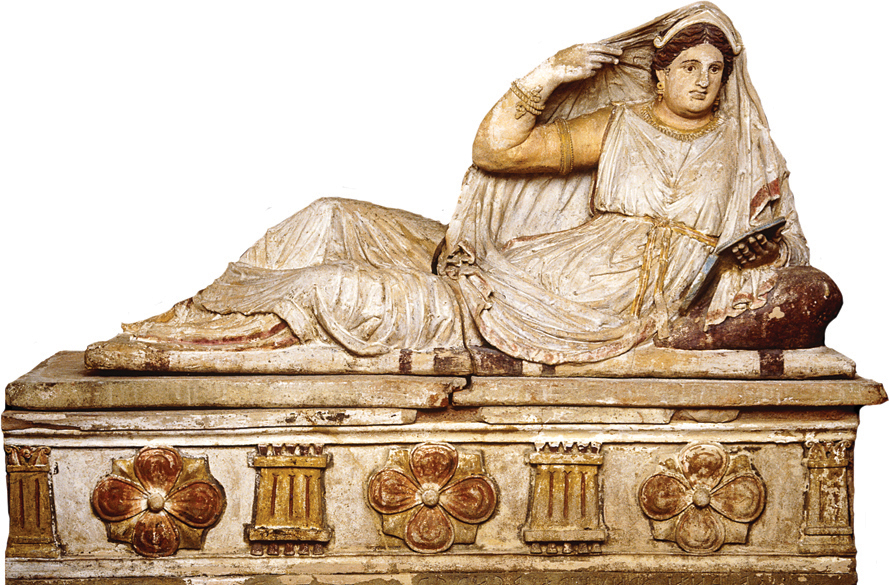A History of World Societies:
Printed Page 146
A History of World Societies Value
Edition: Printed Page 144
Chapter Chronology
The culture that is now called Etruscan developed in north-central Italy about 800 B.C.E. Recent studies of DNA evidence have indicated that the Etruscans most likely originated in Turkey or elsewhere in southwest Asia, although when they migrated to Italy is not clear. The Etruscans spoke a language that was very different from Greek and Latin, but they adopted the Greek alphabet to write their language. We know they wrote letters, records, and literary works, but once the Romans conquered them, knowledge of how to read and write Etruscan died out. Also, the writings themselves largely disappeared, other than inscriptions on stone or engravings in metal. Modern scholars have learned to read Etruscan again to some degree, but most of what we know about their civilization comes from archaeological evidence and from the writings of other peoples who lived around them at the same time.
The Etruscans established permanent settlements that evolved into cities resembling the Greek city-states (see “The Development of the Polis in the Archaeic Age, ca. 800-500 B.C.E.” in Chapter 5) and thereby built a rich cultural life, full of art and music, that became the foundation of civilization in much of Italy. They spread their influence over the surrounding countryside, which they farmed and mined for its rich mineral resources. From an early period the Etruscans began to trade natural products, especially iron, with their Greek neighbors to the south and with other peoples throughout the Mediterranean in exchange for luxury goods. Etruscan cities appear to have been organized in leagues, and beginning about 750 B.C.E. the Etruscans expanded southward into central Italy through military actions on land and sea and through the establishment of colony cities. In the process they encountered a small collection of villages subsequently called Rome.

Sarcophagus of Seianti Hanunia Tlesnasa The woman portrayed on this lavish sarcophagus is the wealthy Etruscan Seianti Hanunia Tlesnasa. Although she is portrayed as a lovely young woman, analysis of the teeth on the body indicates that she was about fifty when she died. The influence of Hellenistic Greek art on Etruscan art is apparent in almost every feature of the sarcophagus. (© The Trustees of the British Museum/Art Resource, NY)

